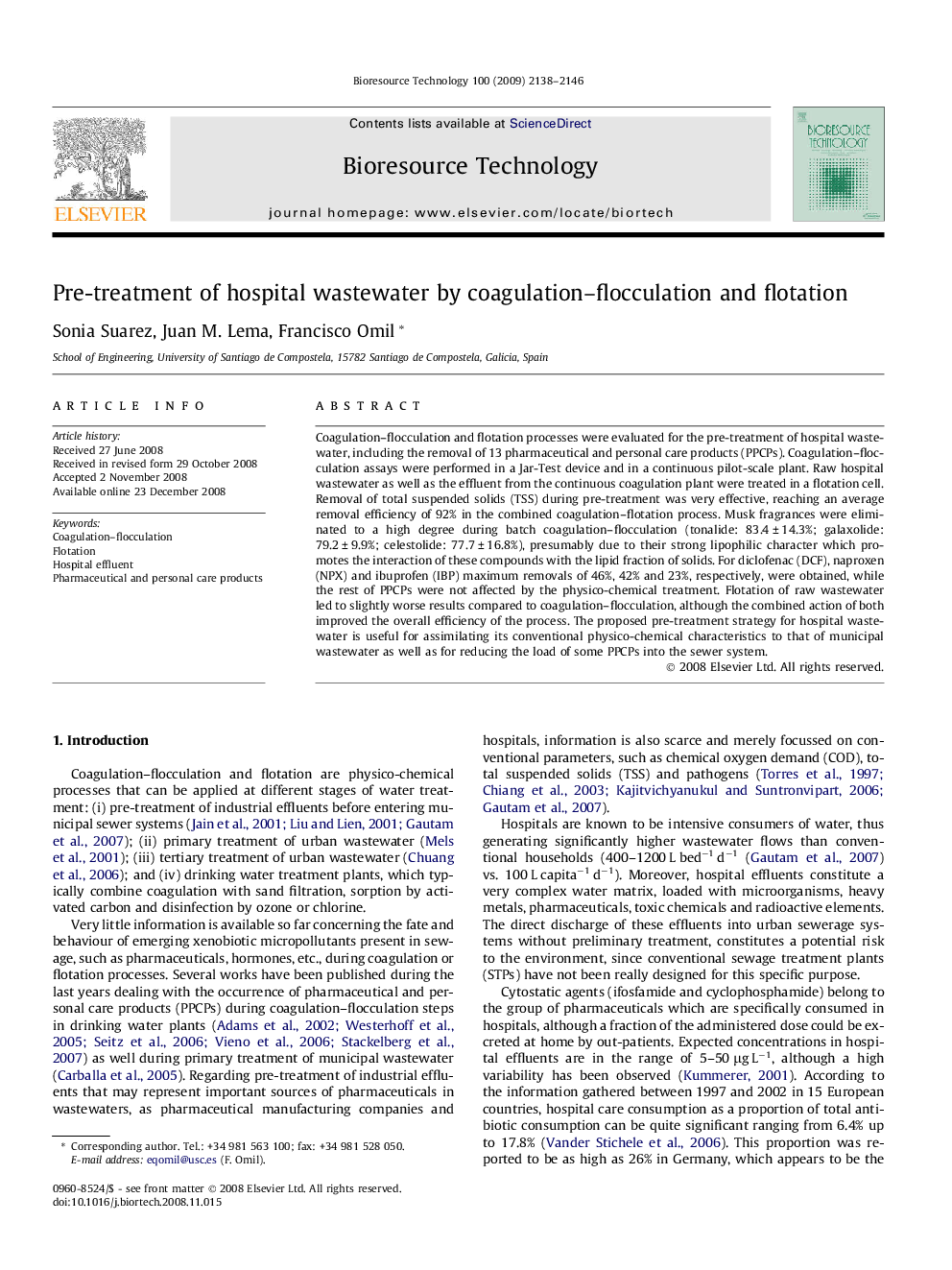| Article ID | Journal | Published Year | Pages | File Type |
|---|---|---|---|---|
| 684012 | Bioresource Technology | 2009 | 9 Pages |
Coagulation–flocculation and flotation processes were evaluated for the pre-treatment of hospital wastewater, including the removal of 13 pharmaceutical and personal care products (PPCPs). Coagulation–flocculation assays were performed in a Jar-Test device and in a continuous pilot-scale plant. Raw hospital wastewater as well as the effluent from the continuous coagulation plant were treated in a flotation cell. Removal of total suspended solids (TSS) during pre-treatment was very effective, reaching an average removal efficiency of 92% in the combined coagulation–flotation process. Musk fragrances were eliminated to a high degree during batch coagulation–flocculation (tonalide: 83.4 ± 14.3%; galaxolide: 79.2 ± 9.9%; celestolide: 77.7 ± 16.8%), presumably due to their strong lipophilic character which promotes the interaction of these compounds with the lipid fraction of solids. For diclofenac (DCF), naproxen (NPX) and ibuprofen (IBP) maximum removals of 46%, 42% and 23%, respectively, were obtained, while the rest of PPCPs were not affected by the physico-chemical treatment. Flotation of raw wastewater led to slightly worse results compared to coagulation–flocculation, although the combined action of both improved the overall efficiency of the process. The proposed pre-treatment strategy for hospital wastewater is useful for assimilating its conventional physico-chemical characteristics to that of municipal wastewater as well as for reducing the load of some PPCPs into the sewer system.
